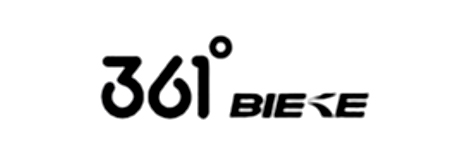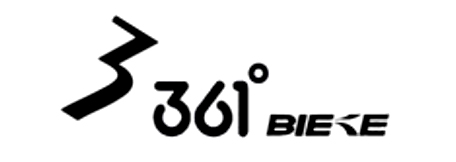How to solve a problem of trademark squatting in Taiwan?
Prologue
Can an unregistered, used trademark oppose a registered but contested trademark in Taiwan? The trademark registration system in Taiwan operates on a first-to-file basis. However, Article 30, paragraph 1, subparagraph 12 of the Trademark Act addresses challenge of trademark squatting, offering a remedy for such situations. This article will explain about a trademark squatting case, taking the following.
Administrative Judgment No. 86 of the Intellectual Property Court in 2018[1]
| Earlier used trademark | Contested trademark |
|---|---|
 |  |
| Used trademark of the plaintiff Used goods of sports shoes | Registration No.01828929 Class 9: Eyeglasses; Snow glasses; Spectacle frames; Eyeglass frame; Pince-nez; Sunglasses; Myopia glasses; Hyperopia glasses; Astigmatism glasses; Anti-slip pad for glasses; Contact lenses; Eyeglass cases; Glasses pouch; Spectacle glasses; Glasses pad for nose; Reading glasses; Anti-glare glasses; Glasses components; and correcting lenses [optics]. |
Background
The applicant applied for the trademark “BIEKE 361 & device” in Class 9, designating the goods “Eyeglasses; Snow glasses; Spectacle frames; Eyeglass frame; ………; Anti-glare glasses; Glasses components; and correcting lenses [optics].”., and the application was granted and registered as Trademark No. 01828929 (referred to as the contested trademark) by the Intellectual Property Office under the Ministry of Economic Affairs (hereinafter referred as “TIPO”). The plaintiff raised opposition to the said trademark registration under Article 30, paragraph 1, subparagraph 12 of the Trademark Act, citing prior use of trademarks such as “ 361 °”and “BIEKE & device”. TIPO issued a decision rejecting the opposition, which the plaintiff appealed. After the appeal was dismissed, the plaintiff brought the case to court.
Excerpts from the judgment (regarding the provision of Article 30(1)(12))
1. The contested trademark breached Article 30(1)(12) of the Act concerning the prevention of trademark squatting:
According to Article 30(1)(12) of the ACT states following:
A trademark shall not be registered in any of the following:
Being identical with or similar to another person’s earlier used trademark and to be applied for goods or services identical with or similar to those for which the earlier used trademark is applied, where the applicant with the intent to imitate the earlier used trademark, being aware of the existence of the earlier used trademark due to contractual, regional, or business connections, or any other relationship with the proprietor of the earlier used trademark, files the application for registration. The following explains the satisfaction of the requirements of this provision in this case.
2.The contested trademark is similar to the earlier used trademark:
The dominant components of the contested trademark as “361°”and “BIEKE” are completely identical to the earlier used trademark. If both of the said trademarks are observed separately in different times and locations, relevant consumers are likely to believe that there is a joint marketing or licensing relationship between them. Therefore, the contested trademark is similar to the earlier used trademark.
3. The earlier trademark has been previously used in the similar goods:
The dominant components of the contested trademark as “361°”and “BIEKE” are completely identical to the earlier used trademark. If both of the said trademarks are observed separately in different times and locations, relevant consumers are likely to believe that there is a joint marketing or licensing relationship between them. Therefore, the contested trademark is similar to the earlier used trademark.
3.1 The earlier used trademark "361°" has been previously used in China and has been deemed as a well-known trademark in China.
The earlier used trademark "361°" has gained considerable popularity through prior use in China. On February 27, 2008, State Administration for Industry and Commerce of the People's Republic of China has recognized the mark “361°” of the earlier used trademark as a well-known trademark in China. Subsequently, multiple online media reports from 2014 to 2016 further confirmed its popularity. By this case, it can be determined that the mark “361°” has been previously used in China and maintained considerable popularity until the contested trademark’s filing date of August 24, 2016.
3.2 Earlier use and similarity can impact the scope of identification of similar goods
The earlier used trademark “361°” has been previously used in China, as detailed above.
Although the goods previously used are sports shoes, apparel and footwear required for sports, and personal accessories such as glasses, may simultaneously attract the attention of relevant consumers and have relevance.
Therefore, the goods designated for use in the contested trademark, such as “Eyeglasses; Snow glasses; Spectacle frames; Eyeglass frame; ………; Anti-glare glasses; Glasses components; and correcting lenses [optics].” should be considered similar goods to those used with the earlier used mark “361°”.
4.The applicant with the intent squatted the earlier used trademark due to a geographical relationship.
The mark “361°” simply combines the components of Arabic numerals and measurement units, exhibiting high originality, and the chance of others coincidentally creating of the exact same trademark is very low. Yet, the two components “361°” and “BIEKE” of both trademarks are completely identical. The possibility is very rare that the applicant accidentally combined “361°”, “BIEKE” and stylized“ 3” to apply for trademark registration without prior exposure to the earlier used trademark. Thus, it is evident that the applicant was aware of the earlier used trademark owing to imitation and geographical relationship with the intent to squat the contested trademark is very obvious.
In summary, the registration of the contested trademark meets the requirements of the provision against trademark squatting, and thus, the registration of the contested trademark should be revoked.
1. Administrative Judgment No. 86 of the Intellectual Property Court in 2018